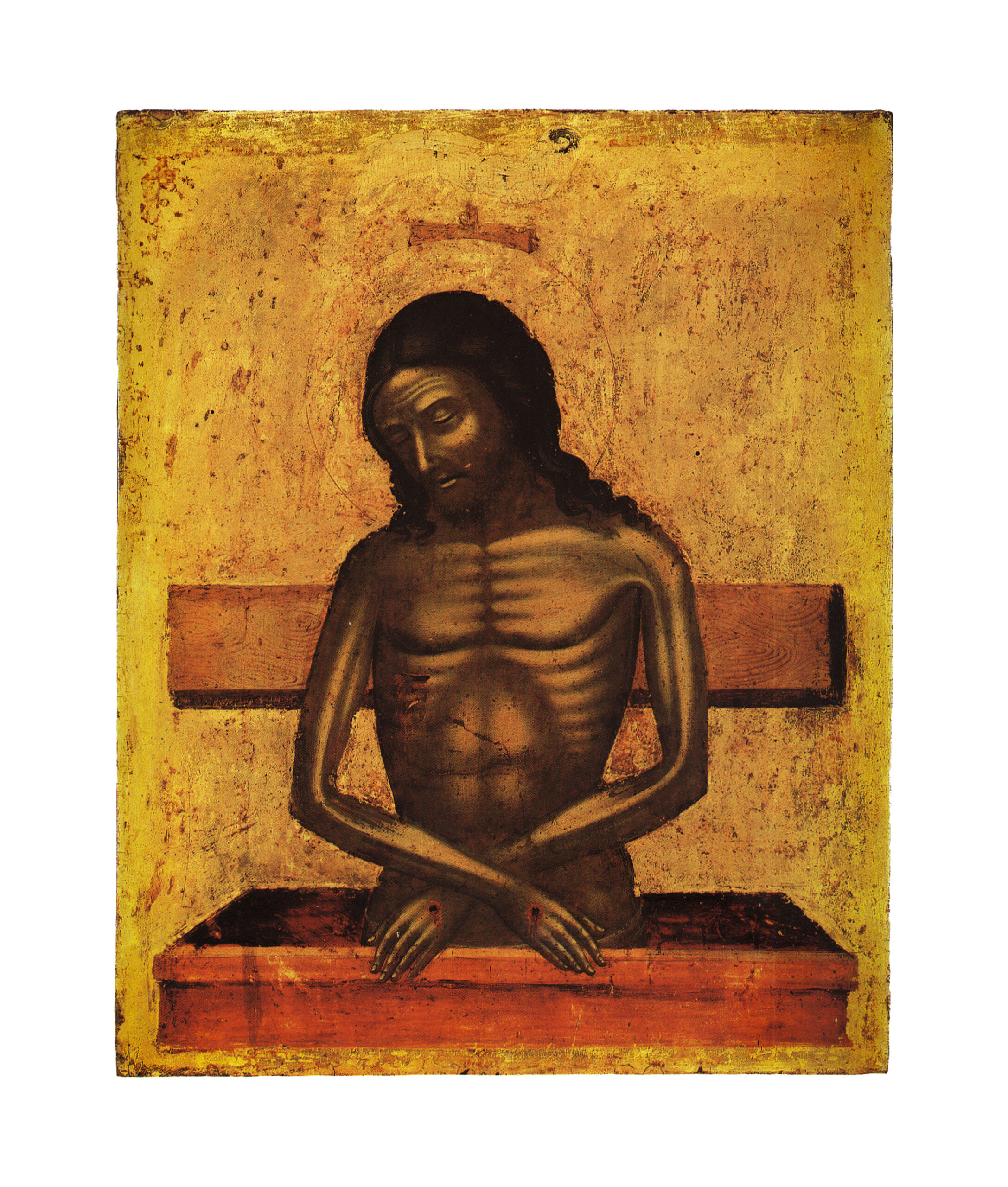

Man of Sorrows
Christ is depicted dead, upright within a rose-coloured marble sarcophagus, to the level of his pelvis. His hands are crossed in front and his head inclines a little towards the right shoulder. His eyes are closed, his mouth is half-open. The luxuriant dark brown hair falls in waves on the shoulders. In his right side is the wound from the lance and on his hands are the marks (stigmata) of the nails, rendered by black dots surrounded by the dried blood. The halo is a simple incised circle. Visible behind Christ are the three arms of the Cross. High up on the vertical arm, upon a small thin pole, is an open scroll on which scant traces of an inscription are preserved. The Cross and the sarcophagus are presented in correct perspective and the grain of the wood is painted on the former.
This par excellence iconographic subject of the Passion, known in Byzantium already from the twelfth century, enjoyed considerable popularity in Italy during the Trecento. It was reproduced by Cretan artists in the fifteenth century, in accordance with Italian models, especially as these had been elaborated in Florence and Venice.
In the Canellopoulos Museum icon the correct perspective of the sarcophagus and the Cross, Christ’s half-open mouth and the open scroll are all elements of purely Late Gothic inspiration.
Noteworthy are the modelling of the body, the honey-coloured highlighting of the smooth monochrome flesh and the highly detailed drawing of the hair and of the grain of the wood on the Cross. All these are characteristics of the miniaturist style of the Cretan painter Nikolaos Tzafouris (documented 1498-1500), to whom the work should be unreservedly ascribed. The figure of Christ is identical to that in the well-known signed work by Tzafouris, which is in the Kunsthistorisches Museum,. Two other similar icons, unsigned, in the Byzantine Museum, Athens, and the monastery of the Life-bearing Source (Zoodochos Pigi) on Patmos, are attributed to the same painter – that of Patmos with greater probability. The representation on the icon discussed here is the most austere of them all (undecorated sarcophagus and halo, absence of the symbols of the Passion, excepting the Cross) and therefore the most dramatic.
PUBLICATION
Skampavias K. 2007. Catalogue no. 130, in Skampavias K.—Chatzidakis N. (eds), Paul and Alexandra Canellopoulos Museum.Byzantine and Post-Byzantine Art, Athens, 190-191.
